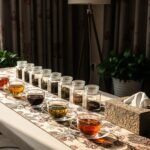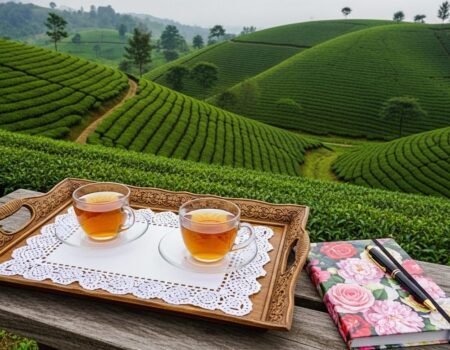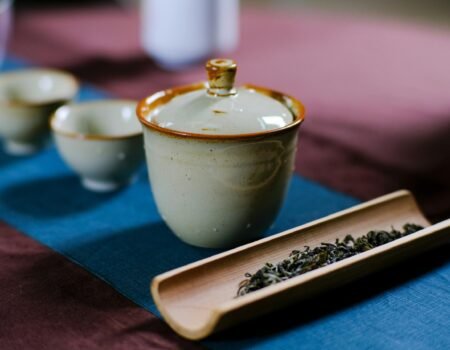
Ultimate Guide to How Processing Affects the Taste of Tea
Index
Index
Most tea lovers struggle to tell the difference between tea types and miss out on the full flavor experience. Tea processing is the key factor that creates the distinct taste in white, green, oolong, black, and pu-erh teas.
This guide will walk you through how tea processing methods affect subtle flavors and aromas.
Key Takeaways
- Tea processing defines the taste differences between white, green, oolong, black, and pu-erh teas through varying levels of oxidation.
- White tea undergoes minimal processing with careful handpicking and withering for 24-48 hours to preserve its delicate, sweet flavor profile.
- Oolong teas showcase the widest flavor range, with oxidation levels from 10-80% creating everything from light floral notes to deep roasted tones.
- Black tea processing follows either Orthodox methods (preserving leaf shape) or CTC (Crush-Tear-Curl) techniques that yield stronger brews with deeper color.
- Pu-erh tea comes in two forms: Sheng (raw) that ages naturally over time, and Shou (ripe) that undergoes accelerated fermentation through the Wo Dui process.
Understanding Tea Processing: The Foundation of Flavor
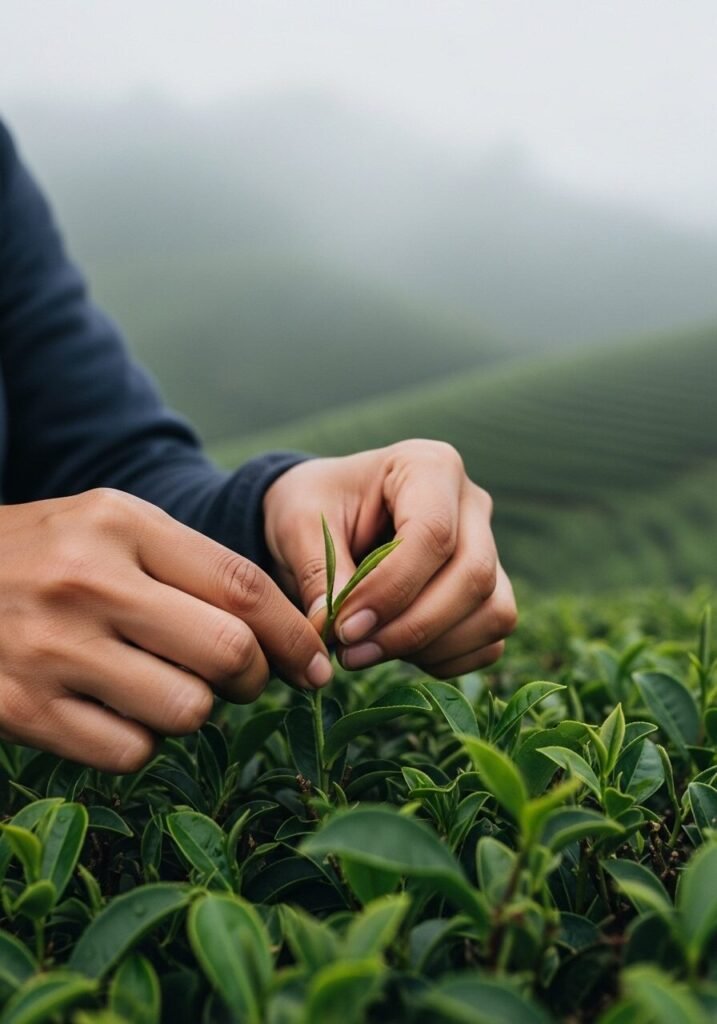
Tea processing forms the backbone of every cup’s taste and character. Each step from plucking to packaging shapes what you’ll experience when you sip that perfect brew.
Core Principles of Tea Processing
Tea processing follows five main stages that transform fresh leaves into the final product you enjoy. These stages include plucking, withering, rolling, fermentation, and drying. Each step plays a crucial role in developing flavor compounds.
For example, withering reduces moisture content from about 75% to 55% while enhancing biochemical properties that affect taste. The fermentation stage oxidizes catechins into theaflavins and thearubigins, which give black teas their distinct color and strong flavor profile.
The final drying process aims for a specific 3-4% moisture content to ensure proper storage and taste development. Manual plucking remains the gold standard for superior flavor and aroma in high-quality teas.
Most tea plants thrive in temperatures between 18°C and 25°C (64°and 77°F) with at least 1200 mm of annual rainfall and soil pH levels of 4.5 to 5.6. These growing conditions, combined with careful processing, create the wide range of flavors found across different tea types.
The Role of Oxidation in Defining Tea Categories
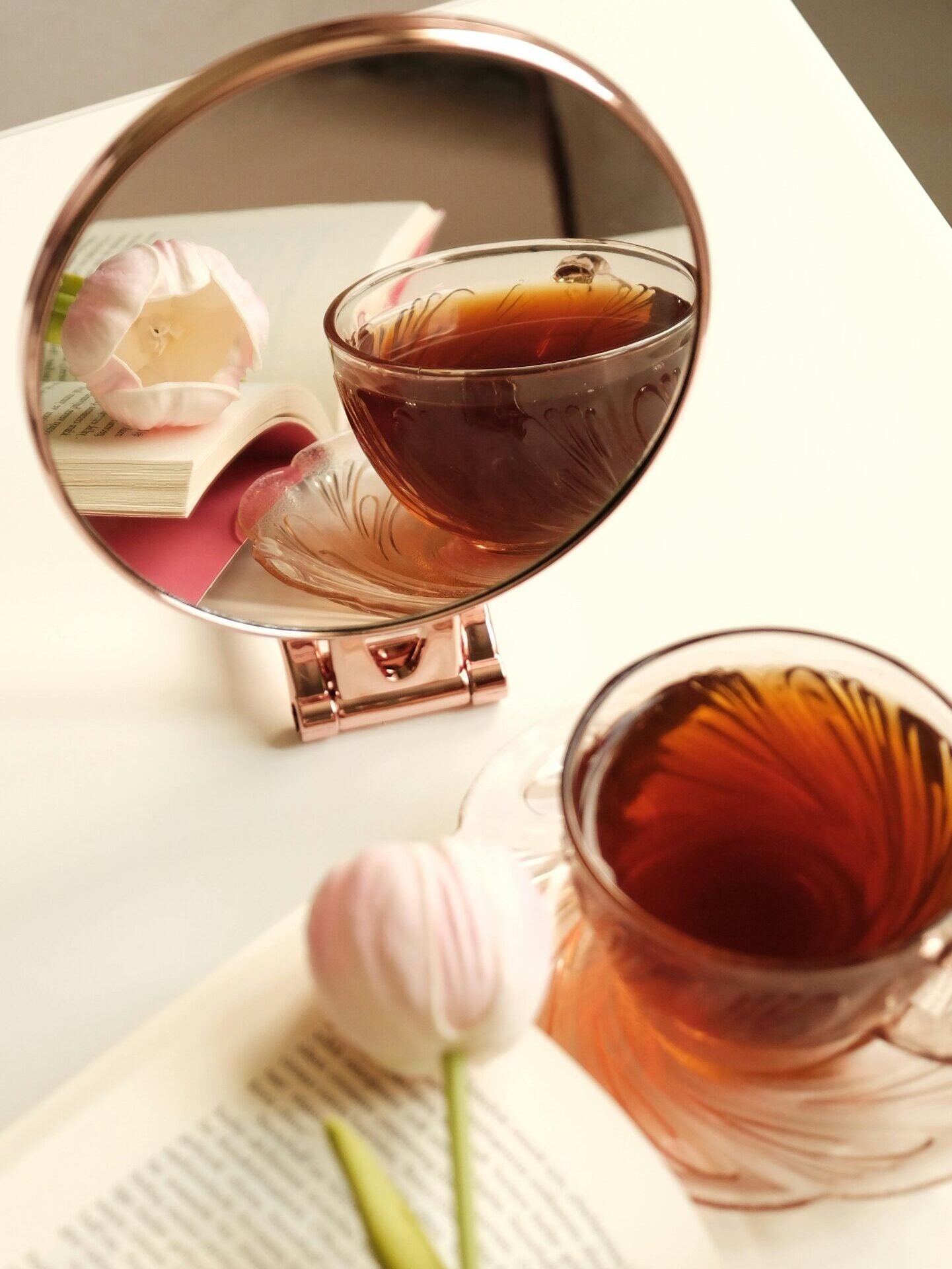
Oxidation acts as the main factor that creates distinct tea types from the same plant. This chemical process transforms tea leaves by changing their compounds, flavor profiles, and colors.
Green teas stay bright and vegetal because farmers halt oxidation early through heat. Black teas develop rich amber colors and bold flavors from full oxidation. White teas maintain delicate floral notes due to minimal processing and limited oxygen exposure.
Oolong teas showcase the spectrum of partial oxidation, ranging from 10-80% oxidized. This variation produces diverse flavor profiles from light and floral to dark and toasty. Each tea category has a unique chemical makeup based on its oxidation level.
The process affects catechins, theaflavins, and other compounds that impact taste, aroma, and caffeine content. These differences explain why green teas taste fresh and grassy while black teas offer robust, malty notes with higher caffeine levels.
White Tea: Minimal Processing, Delicate Flavors
White tea stands as the most delicate member of the tea family, picked early and processed with minimal handling. Its subtle flavor profile offers sweet, floral notes with hints of honey and fresh hay that dance on your tongue.
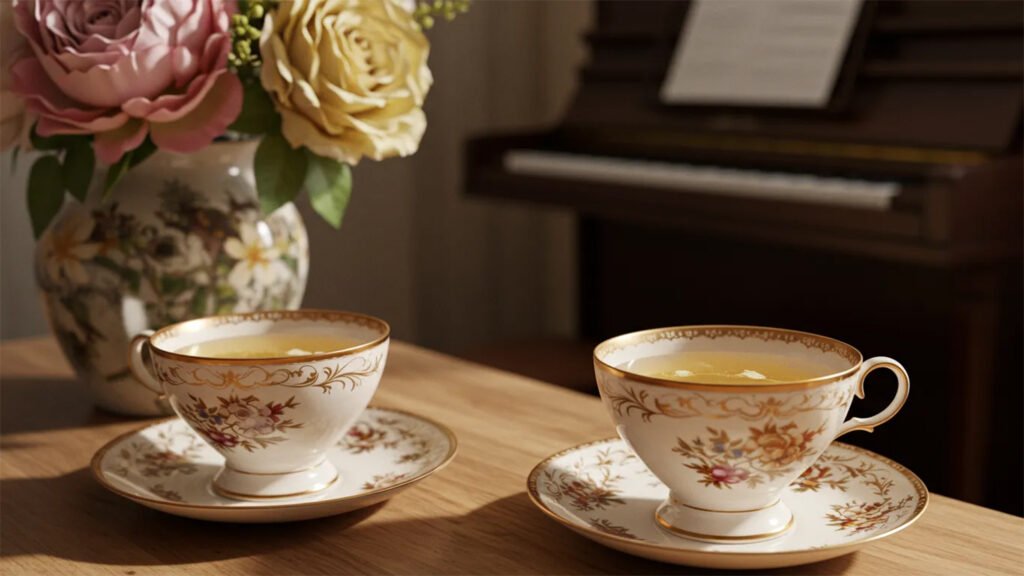
Key Processing Steps for White Tea
White tea requires minimal processing to preserve its delicate flavors and natural sweetness. The careful handling of tea leaves during each step impacts the final taste profile that tea lovers cherish.
Harvest and Selection
White tea production begins with meticulous leaf selection during the spring harvest season.
- Young buds and tender leaves contain the highest concentration of flavor compounds—you’ll taste this delicate sweetness in every cup
- Careful handpicking preserves the leaves’ natural qualities while preventing damage to their silvery-white appearance
- Spring harvest timing captures the freshest growth when tea plants produce their most prized shoots
The Withering Process
The transformation from fresh leaf to finished tea relies on controlled moisture reduction.

- Solar withering exposes leaves to indirect sunlight for several hours, developing subtle aromas while beginning the drying process
- Indoor withering continues in temperature-controlled rooms with proper air circulation—this 24-48 hour period allows leaves to lose moisture gradually
- Natural oxidation occurs minimally during withering, creating white tea’s characteristic light, sweet flavor profile

Finishing and Quality Control
Final processing steps ensure consistent quality and proper preservation of the tea’s delicate character.
- Drying methods lock in flavor—traditional charcoal drying adds subtle smoky notes while modern electric dryers provide consistency
- Sorting and grading removes stems and damaged pieces, separating leaves by size for uniform quality
- Storage requirements demand airtight containers to protect against moisture and odors—properly stored white tea develops complexity over time
- Professional evaluation examines dry leaf appearance, infused leaf quality, and liquor characteristics before market release
Understanding these processing steps helps you appreciate why premium white teas command higher prices—each phase requires skilled attention to preserve the tea’s subtle character.
Resulting Flavor Profile and Tasting Notes
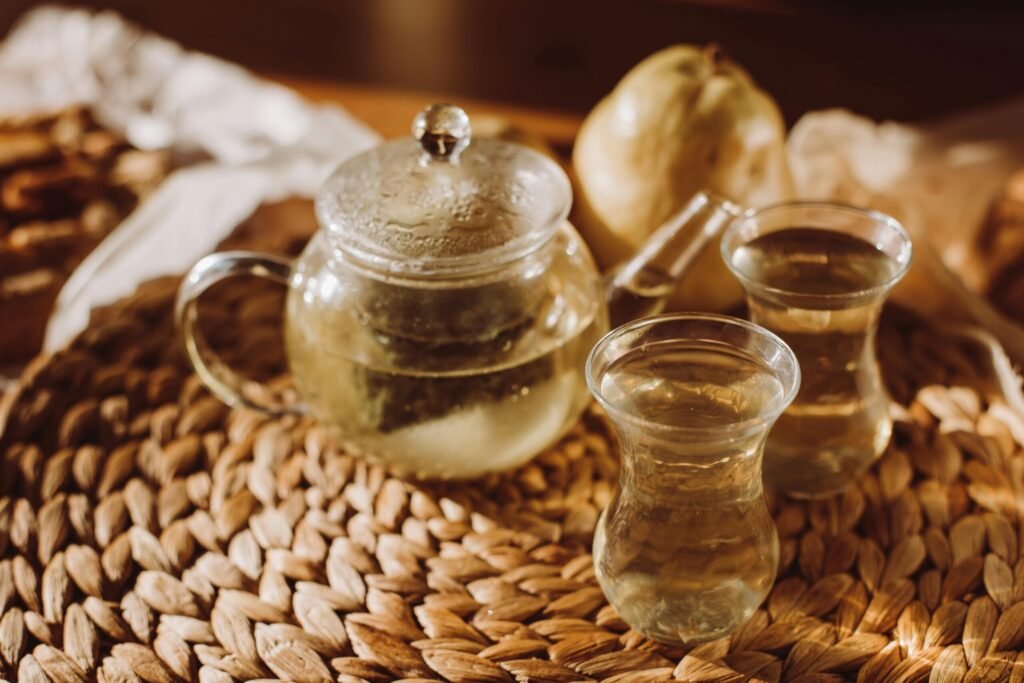
White tea offers a gentle flavor profile that tea lovers prize for its subtlety. Floral, fruity, and sweet notes dominate the taste experience, often accompanied by buttery and herbaceous undertones.
Many tea experts detect hints of hay, fresh melons, and honey in properly brewed white tea.
The delicate character stems directly from minimal processing methods that preserve the tea’s natural compounds. Tea temperature plays a crucial role in tasting these nuances – steep at 175-185°F (80-85°C) for 3-5 minutes to capture the full flavor spectrum.
This careful preparation reveals the true nature of white tea without masking its light body and smooth mouthfeel.
Green Tea: Halting Oxidation for Freshness
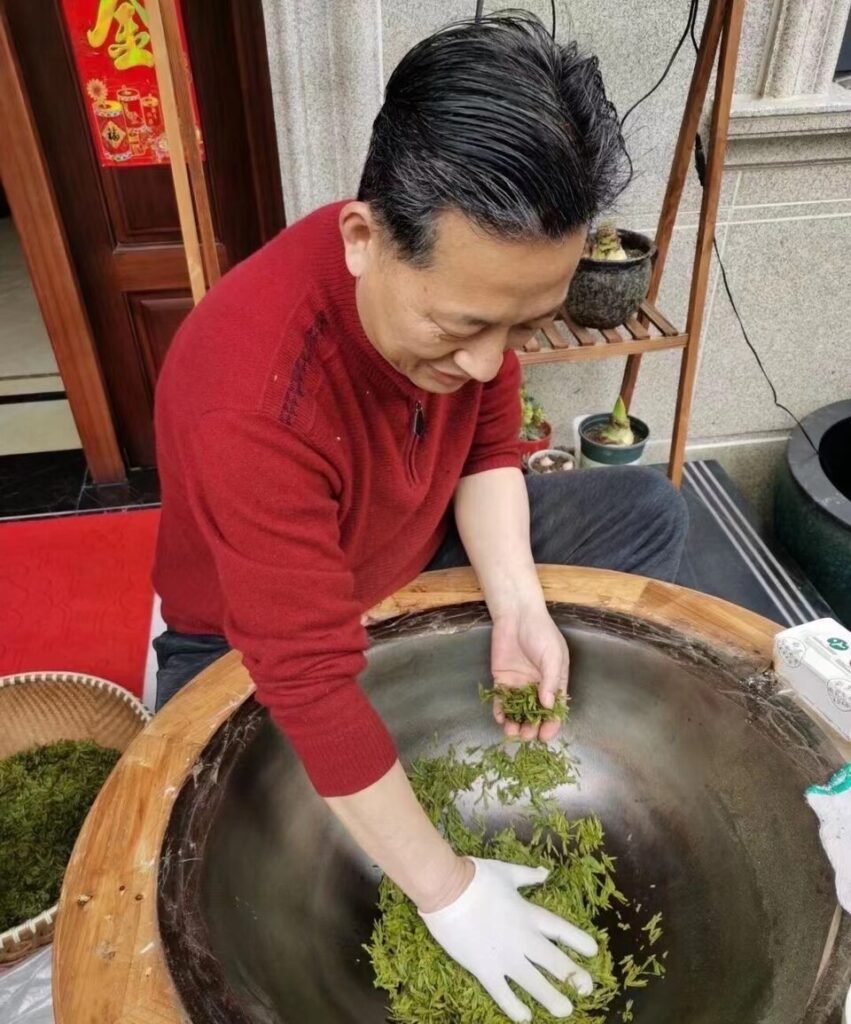
Green tea’s flavor comes from stopping oxidation right after leaves are picked. Steaming or pan-firing locks in the fresh, grassy notes that make green tea stand out from other types.
Steaming vs. Pan-Firing: Impact on Green Tea Character
Japanese tea makers developed steaming techniques in the 18th century to lock in freshness. This process keeps leaves vibrant green and creates grassy, vegetal flavors in teas like Matcha.
You’ll notice these steamed varieties have bright colors and crisp tastes. Steamed teas remain less common today and mostly appear in specialty shops for tea enthusiasts.
Pan-firing, by contrast, transforms tea leaves to a brownish hue through direct heat contact. This ancient method imparts toasty, nutty notes that many tea drinkers enjoy. The flavor profile differs greatly from steamed options, offering deeper, more roasted characteristics.
Each processing style creates distinct sensory experiences that appeal to different palates and brewing preferences.
Dominant Flavor and Aroma Characteristics
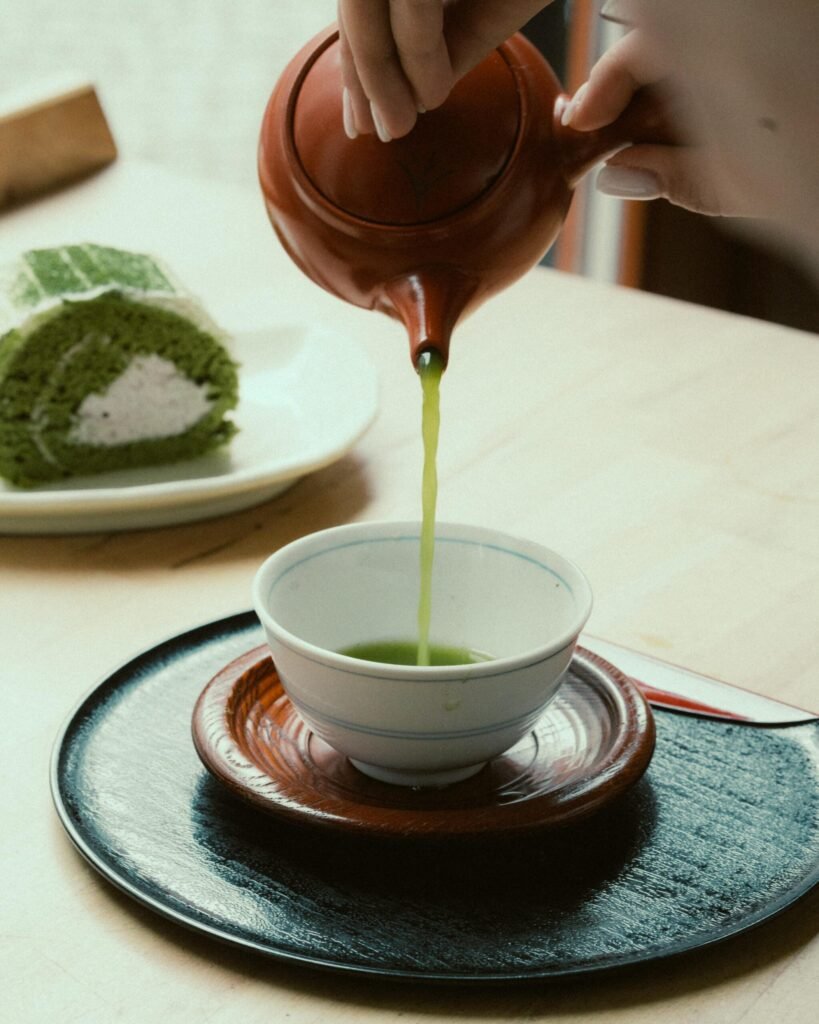
Green tea offers a spectrum of taste experiences based on processing methods. Matcha delivers rich vegetal notes with a creamy texture that coats your tongue. The flavor compounds in Sencha create delicate grassy hints paired with savory umami depth.
Gyokuro stands out with its sweet profile that lingers pleasantly.
Chinese varieties bring their own distinct signatures to the cup. Long Jing (Dragon Well) presents toasty, nutty flavors that balance perfectly with its smooth body. Anji Bai Cha surprises tasters with light sweetness and floral scents that rise from the cup.
Tai Ping Hou Kui completes the green tea flavor map with its sweet, floral character that makes it popular among tea enthusiasts seeking subtle complexity.
Yellow Tea: The Unique “Smothering” Process
Yellow tea stands out with its rare “smothering” process that creates its signature mellow taste. This special technique wraps warm leaves in cloth, allowing slight oxidation while trapping heat and moisture to transform harsh green notes into something sweeter.
How Mèn Huáng Shapes Yellow Tea
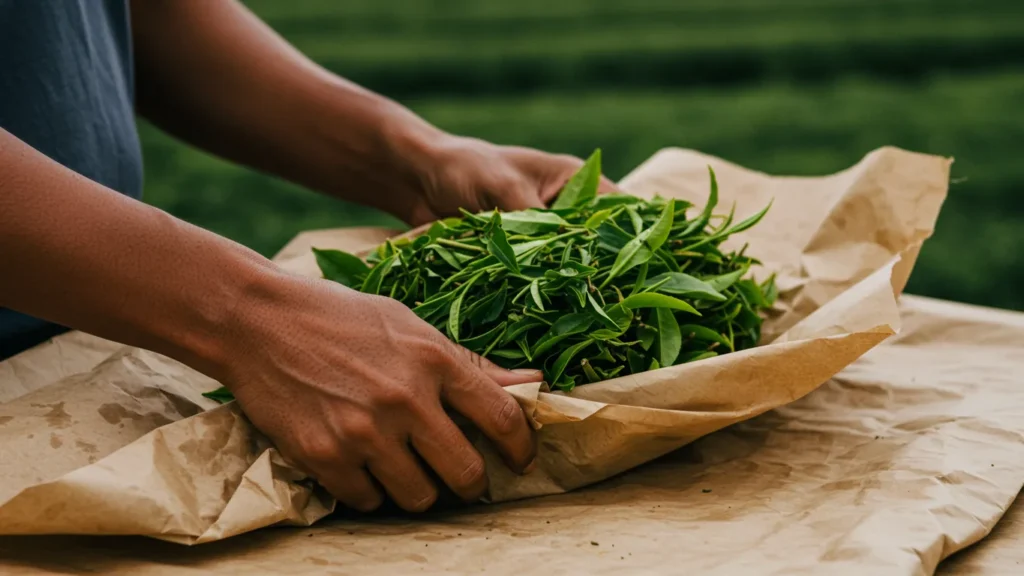
Mèn Huáng stands as the defining process that creates the unique character of yellow tea. Tea makers wrap fresh leaves in cloth or paper during a slow drying phase, allowing controlled oxidation to occur.
This special “smothering” technique reduces the grassy notes found in green teas while developing the signature golden color that gives yellow tea its name. The wrapped leaves undergo subtle chemical changes that can’t happen with standard processing methods.
The results of Mèn Huáng show up clearly in the cup. The process creates a mellow, sweet flavor profile that sits between green and oolong teas on the taste spectrum. Tea experts prize yellow tea for its smooth body and lack of astringency.
The cloth wrapping step might seem simple, but it reflects centuries of Chinese tea craft and remains vital to developing the complex flavor compounds that make yellow tea special.
Each step of this traditional method enhances the tea’s sensory qualities while preserving its cultural significance.
Distinctive Flavor and Aroma Nuances
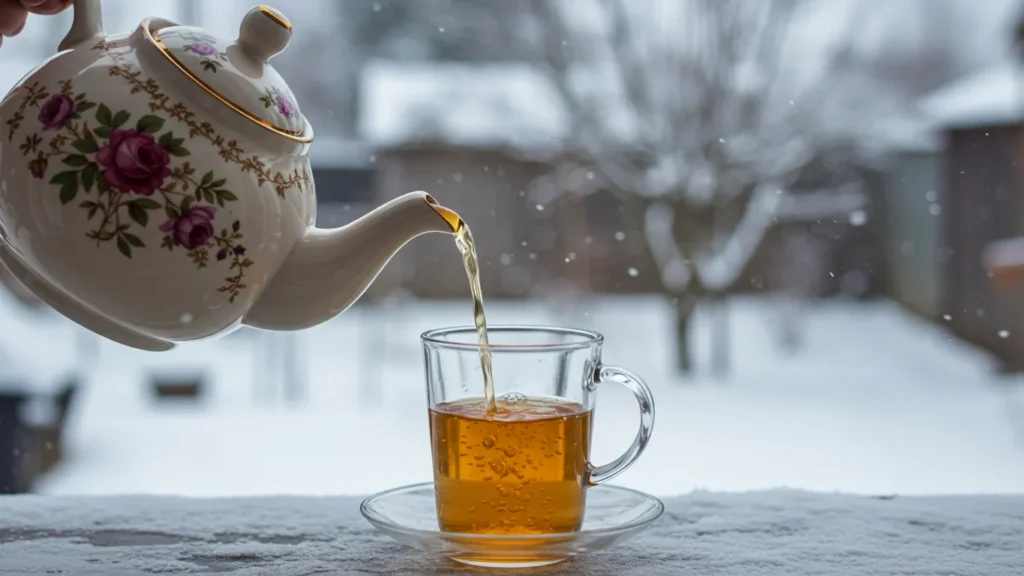
The unique Mèn Huáng process directly shapes yellow tea’s signature flavor profile. This careful “smothering” technique transforms the tea’s character, reducing grassy notes while developing its mellow, sweet qualities.
Yellow tea varieties like Junshan Yinzhen and Huoshan Huangya offer distinct taste experiences ranging from delicate floral hints to rich nutty undertones.
Yellow tea stands apart from other tea types through its balanced flavor profile. The taste lacks the sharp vegetal notes of green tea yet maintains bright, fresh qualities with a smooth mouthfeel.
Most yellow teas present gentle sweetness with subtle fruit or honey notes. The aroma often carries mild toasty scents that tea experts compare to fresh hay or warm chestnuts. Proper brewing at specific water temperatures brings out these nuanced flavors that make yellow tea a prized but lesser-known treasure in the tea world.
Oolong Tea: The Spectrum of Partial Oxidation
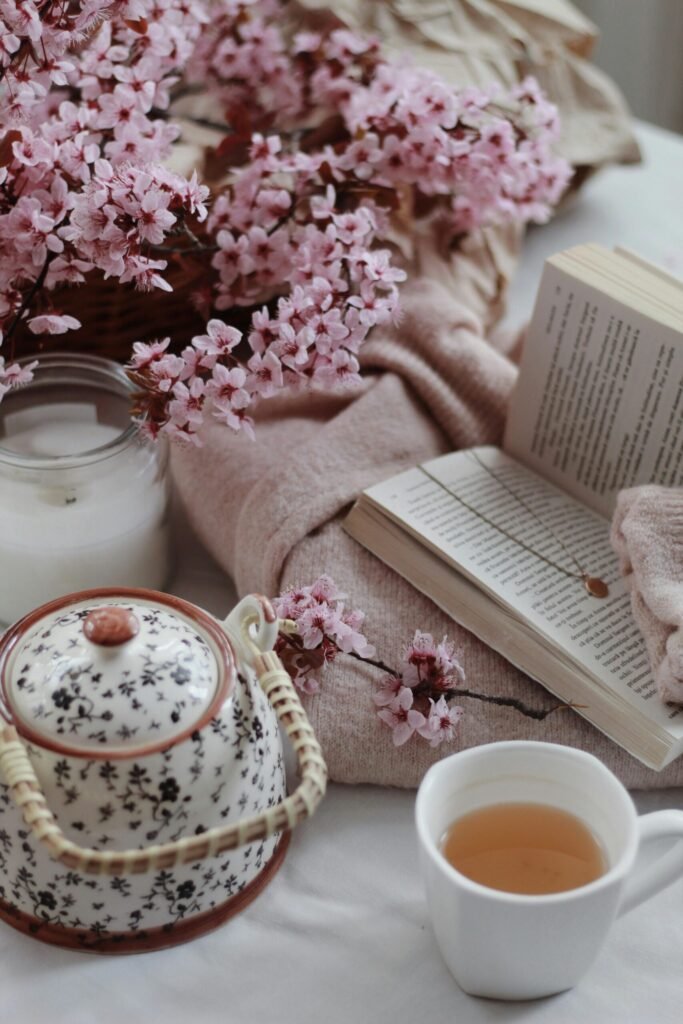
Oolong teas dance between green and black tea worlds, offering flavors that range from light floral notes to deep roasted tones. This partially oxidized tea category showcases the most dramatic changes in taste based on processing methods, with oxidation levels varying from 10% to 80%.
Processing Lightly Oxidized vs. Darker Oxidized Oolongs
The processing method creates stark differences between light and dark oolongs. Light oolongs undergo minimal oxidation (10-30%) and retain fresh, grassy, and floral notes similar to green teas but with added complexity.
Producers halt oxidation early through high-temperature application, preserving the tea’s bright character while developing subtle depth. These teas often display a pale golden liquor with a smooth, sometimes creamy mouthfeel.
Dark oolongs experience extended oxidation periods (50-70%) that transform their flavor profile completely. The leaves develop rich, mature fruity or honey-like aromas through longer withering and rolling phases.
This extended process breaks down more cell walls, releasing compounds that create deeper amber cups with robust body. The origin of the tea leaves also plays a crucial role in the final taste, with each growing region imparting distinct characteristics that tea graders evaluate using systems comparable to wine classification.
Diverse Flavor Profiles and Mouthfeel of Oolongs
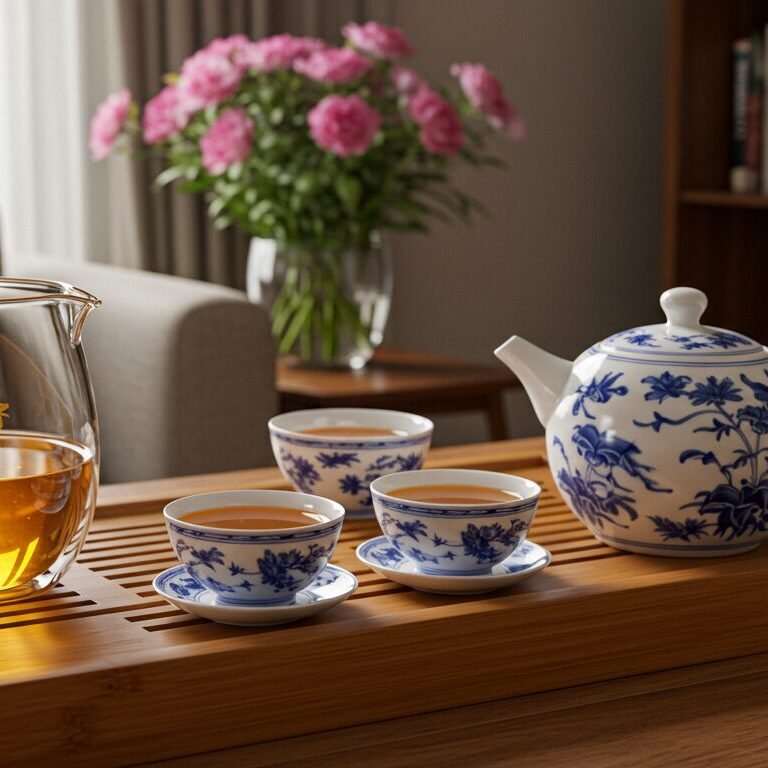
Oolong teas showcase a remarkable range of flavors that directly reflect their oxidation levels. Lightly oxidized oolongs burst with fresh floral notes that dance on your tongue, while heavily oxidized varieties deliver mature fruity or honey-like aromas that linger pleasantly.
The elevation where tea grows matters too – high-altitude oolongs taste sweeter and carry more complex aromas than their lowland cousins. You’ll notice this difference immediately in your cup.
The texture of oolong tea varies just as much as its taste. Some oolongs feel silky smooth, coating your mouth with a buttery sensation. Others might present a brisk, clean finish that refreshes your palate.
Soil quality plays a major role in this sensory experience, enhancing both complexity and mouthfeel. Spring harvests tend to yield teas richer in amino acids, creating a sweeter, more rounded cup compared to other seasons.
Tea from older trees offers deeper complexity, while younger bushes produce sweeter but less intricate flavors that tea lovers often find more approachable.
Black Tea: Full Oxidation for Robust Character
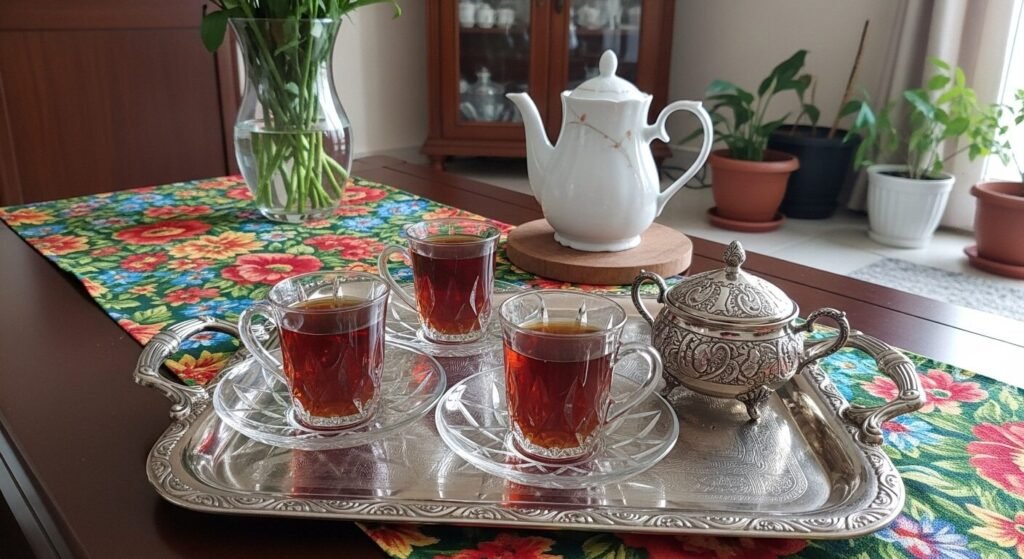
Black tea gets its bold taste from full oxidation, which turns leaves dark and creates rich flavors. This process builds complex notes ranging from malty Assam to the bright, muscatel character of Darjeeling teas.
Orthodox vs. CTC Processing Methods
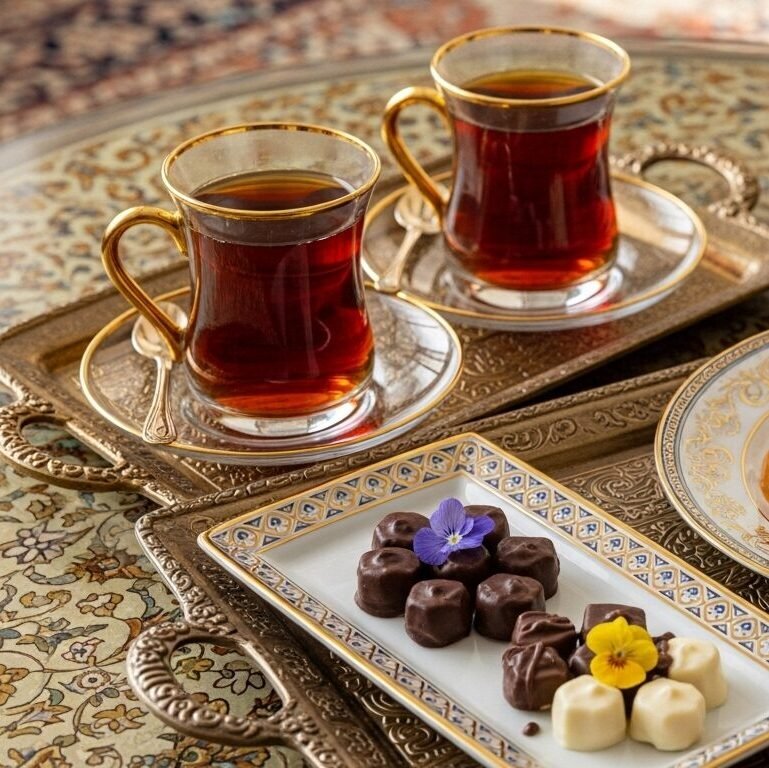
Tea processing splits into two main paths: Orthodox and CTC (Crush-Tear-Curl). Orthodox methods follow traditional steps of withering, rolling, fermenting, and drying that preserve the leaf’s natural shape.
This careful handling creates teas with complex flavors and higher levels of theaflavins and thearubigins – compounds that give tea its distinct taste. The Orthodox process takes more time but yields teas with richer aromas that tea connoisseurs often prefer.
CTC processing uses a Rotorvane machine that breaks tea leaves into uniform pieces for faster production. This method creates smaller particles that brew quickly and produce a stronger cup with deep color.
While CTC teas lack the aromatic complexity of Orthodox varieties, they make up for it with bold flavor and strength. The processing choice greatly shapes the final product’s taste profile, making it crucial for understanding the distinct flavor notes found in different black tea regions.
Common Flavor Notes and Regional Variations (e.g., Assam, Darjeeling)
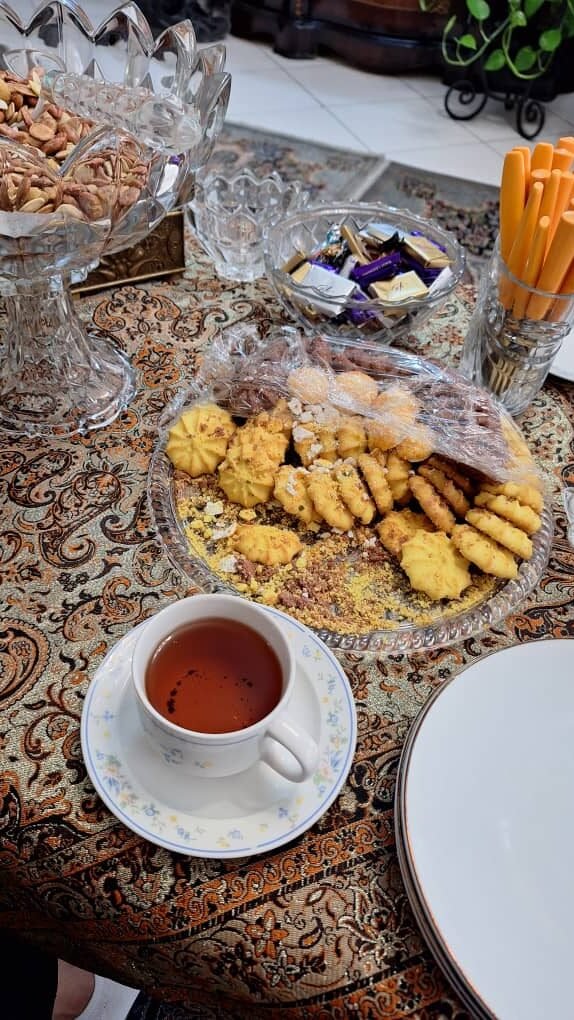
Black teas showcase distinct flavor profiles based on their growing regions. Assam teas deliver bold, malty flavors with a rich copper brew, perfect for morning cups with milk. Darjeeling teas, often called the “champagne of teas,” feature unique muscatel notes that range from light and fruity in first flush to deeper and more complex in second flush harvests.
Insect activity on Darjeeling tea plants creates special terpenes that contribute to its prized muscatel character. True Darjeeling tea comes only from specific estates in India’s West Bengal region, though it spans several processing styles.
The tea’s bold astringency balances with sweet, grape-like notes that tea lovers seek worldwide, making it one of the most treasured black tea varieties on the market.
The Special Case of Darjeeling First Flush
Darjeeling First Flush stands as the crown jewel of Indian teas, harvested during early spring from March to May. This premium tea boasts a light, floral flavor profile due to its minimal oxidation process.
Tea experts prize First Flush for its golden color when brewed and higher caffeine content compared to later harvests. The highest grade earns the prestigious SFTGFOP label (Super Fine Tippy Golden Flowery Orange Pekoe), marking it as truly exceptional.
Mountain elevation plays a crucial role in First Flush quality, as these teas grow in India’s high regions where cool air slows leaf growth. This slower growth concentrates flavor compounds in the young leaves and buds.
Proper brewing requires one teaspoon of leaves per six ounces of boiling water to extract the delicate notes. Many tea lovers describe First Flush as having wine-like qualities with complex aromas that change throughout the drinking experience.
Pu-erh Tea: The World of Post-Fermentation
Pu-erh tea stands apart from other teas through its unique aging and fermentation methods. This special category of tea transforms over time, creating deep flavors that range from earthy and woody to sweet and fruity.
Sheng (Raw) Pu-erh: Natural Aging and Flavor Evolution
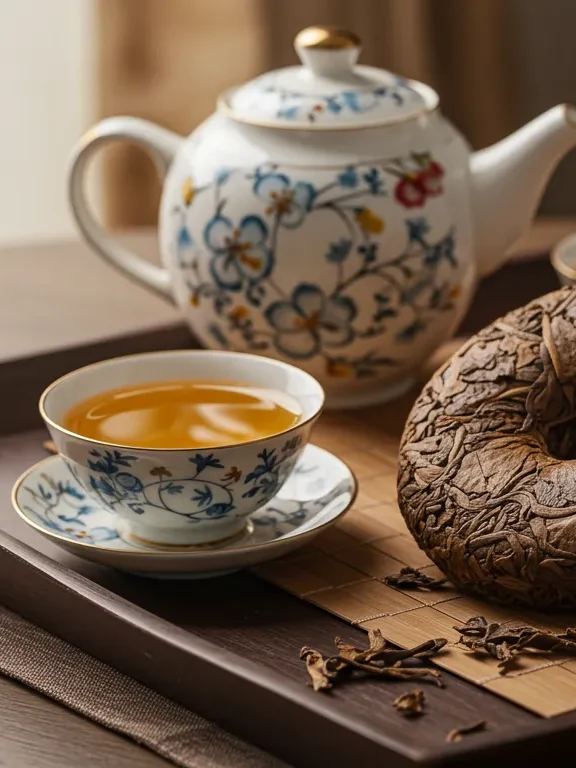
Raw Pu-erh tea transforms remarkably through natural aging. Fresh Sheng starts with bright grassy and floral notes plus a touch of bitterness that many tea lovers appreciate. Over time, these flavors shift into deeper earthy, woody, and fruity characteristics.
This aging process also creates a silky mouthfeel that makes aged Sheng highly sought after in the tea market.
Proper brewing brings out the best in Sheng Pu-erh tea. You’ll want to use near-boiling water and steep it longer than other teas to extract its full flavor profile. Storage conditions play a major role in how these teas develop – too much humidity can spoil the leaves while too little slows the aging process.
Many tea enthusiasts store their Sheng cakes in clay vessels to maintain ideal moisture levels for optimal flavor evolution.
Shou (Ripe) Pu-erh: Accelerated Fermentation and Earthy Notes
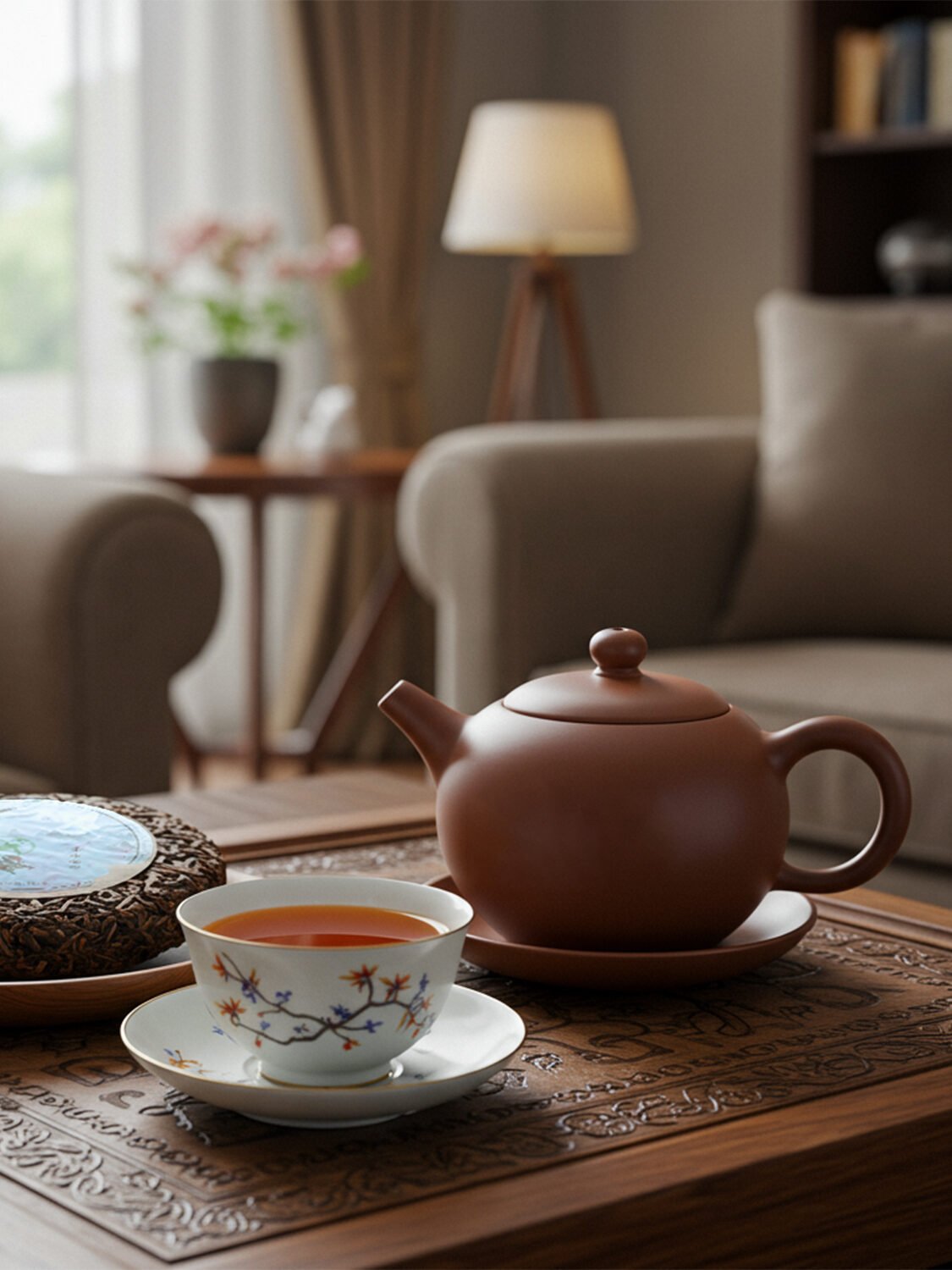
Shou Pu-erh emerged in the 1970s as China’s answer to growing black tea demand. This tea undergoes the Wo Dui process, which speeds up fermentation through careful moisture and heat control.
Most Shou Pu-erh comes from Yunnan province’s Da Ye tea plants, prized for their large leaves and strong flavor potential. The fermentation creates its signature earthy profile that many tea lovers seek.
Quality makes a huge difference in Shou Pu-erh taste. Lower-grade teas often have fishy notes that many beginners find off-putting. Premium Shou Pu-erh, though, offers rich flavors similar to dark rum, vanilla, and forest floor.
The liquid appears deep burgundy to almost black, with a smooth, thick mouthfeel that coats your tongue. This tea’s unique processing creates a drinking experience unlike any other tea category.
How Processing Influences Key Flavor Compounds
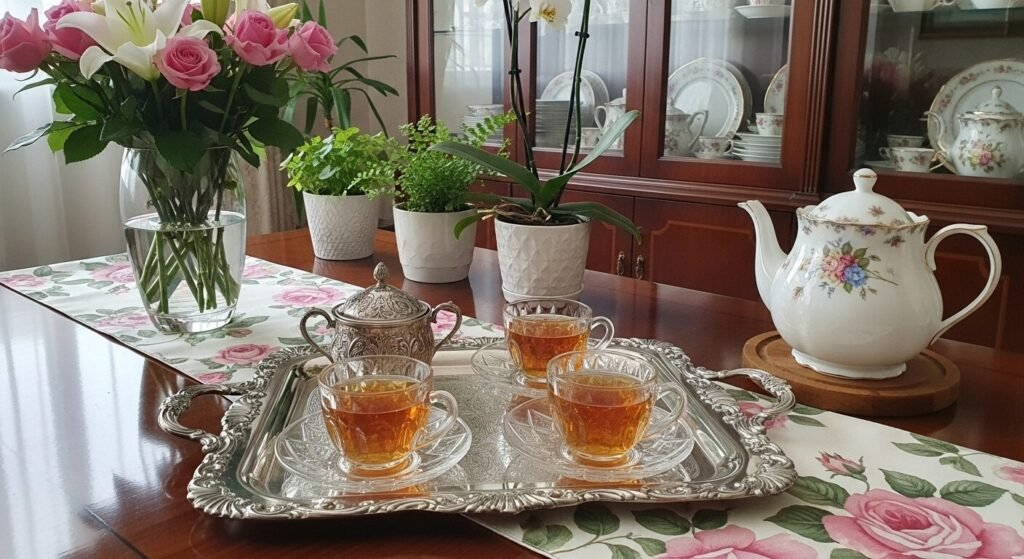
Tea processing transforms key flavor compounds that shape your tea experience. Each step – from withering to firing – changes catechins and amino acids in specific ways that create distinct taste profiles.
Impact on Catechins, Theaflavins, Thearubigins, and Amino Acids
Tea processing transforms key flavor compounds in dramatic ways. Catechins, the main polyphenols in fresh leaves, decrease during processing as they convert to other compounds. During oxidation in the rolling stage, these catechins change into theaflavins and thearubigins, which create the reddish color and bold taste in black teas.
White and green teas keep more original catechins, giving them lighter flavors and more antioxidant power.
Processing methods greatly affect amino acids like L-theanine, which creates the savory “umami” taste in high-quality teas. Fermentation conditions play a major role in these chemical changes, directly impacting both flavor and health benefits.
The careful control of these processes explains why properly made tea shows better sensory qualities than poorly processed leaves. These chemical transformations also influence how tea feels in your mouth, creating the spectrum from light and crisp to full-bodied and rich.
Relationship Between Processing and Mouthfeel

Tea processing methods directly shape how tea feels in your mouth. Each step from withering to firing affects thickness, smoothness, and astringency levels in the final brew. For example, heavily oxidized black teas often display more robust body and stronger astringency than white teas, which undergo minimal processing.
The clarity of your brewed tea offers visual clues about its texture – bright, clear liquids typically deliver clean, precise mouthfeel while cloudy infusions suggest thicker body.
Processing variations create distinct sensory experiences across tea types. High-quality oolongs processed with careful leaf rolling develop a silky texture that coats the palate, while properly processed green teas balance vegetal notes with pleasant thickness.
You can spot well-processed tea by examining both its appearance and how it feels against your tongue and cheeks. The thickness, smoothness, and astringency balance reveal the skill behind the tea’s production and contribute significantly to your overall tasting experience.
Conclusion
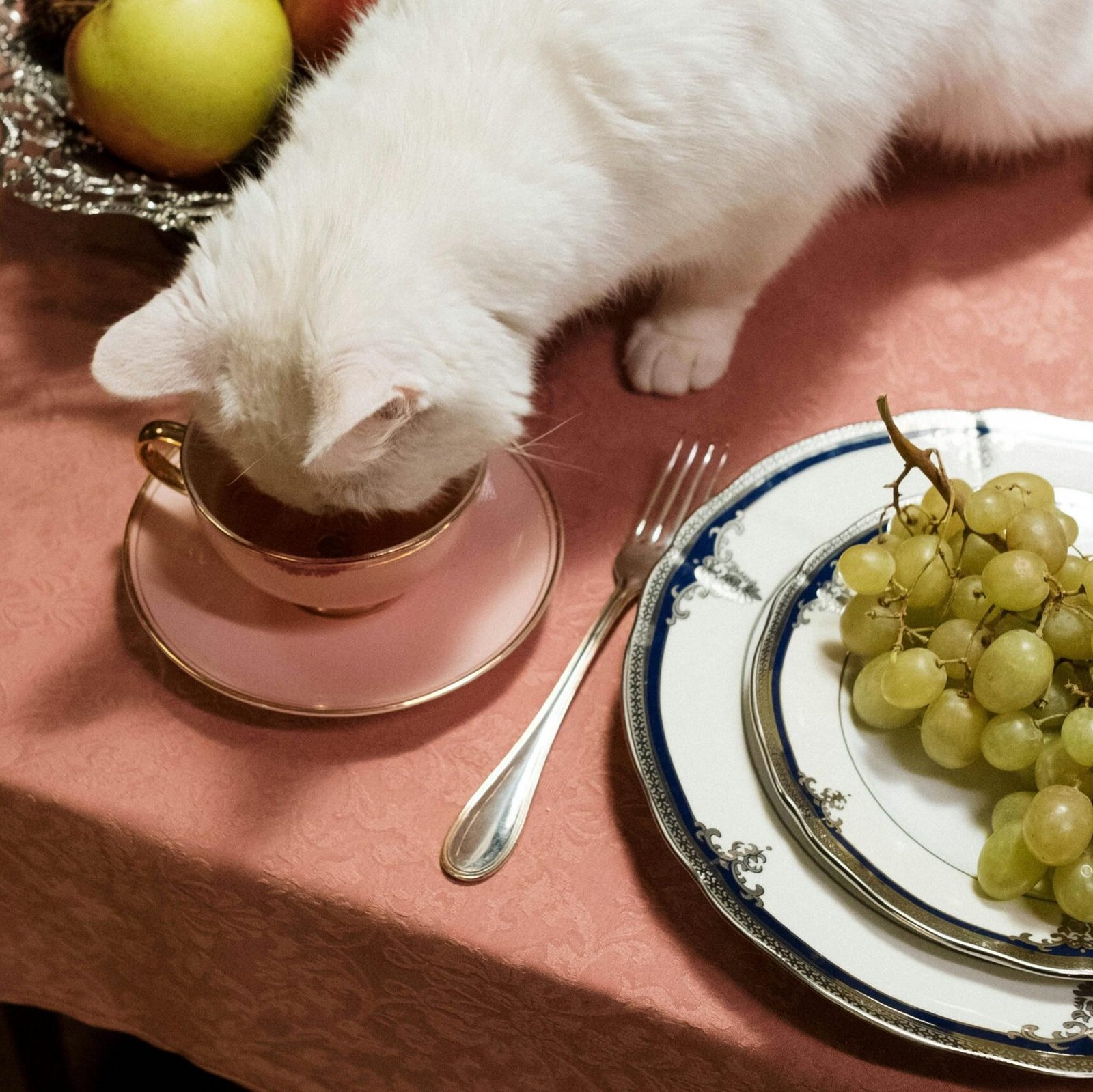
Mastering tea processing knowledge transforms your tasting skills from basic to expert level. You’ll spot the differences between white tea’s gentle character and black tea’s bold profile with practice and attention.
The journey from leaf to cup shapes every sip you take, creating unique flavors through oxidation, drying, and firing techniques. Your newfound skills will help you pick better teas and enjoy deeper flavor experiences.
Next time you brew a cup, pay attention to the processing clues hidden in the leaves, aroma, and taste – they tell the true story of your tea.
FAQs
1. What is tea tasting and how does it differ from just drinking tea?
Tea tasting is a process by which a trained professional evaluates the quality of a particular tea. Unlike casual drinking, tasting involves careful attention to the aroma, flavor, and mouthfeel of the tea. The art of tea tasting is similar to wine tasting, requiring knowledge of different types of tea and their unique characteristics.
2. How do I prepare for a tea tasting session?
Start with clean equipment to avoid contamination. Use good quality water with proper temperature for each type of tea. Measure the right amount of tea leaves and time your steeping precisely.
3. What should I look for when examining dry tea leaves?
Examine the whole leaf quality, color, and density of the dry tea leaves. Good tea often has consistent appearance and pleasant scent. Poor quality tea may show broken leaves or foreign matter.
4. Why do tea tasters slurp tea loudly?
Slurping aerates the tea and spreads it across all taste receptors in your mouth. This technique helps you detect subtle flavors and evaluate the full profile of the tea.
5. What role does smell play in tea tasting?
Your sense of smell is crucial since aroma compounds greatly affect how we perceive taste. Always note the scent of both dry and wet leaves before tasting. The nose can detect nuances that the tongue might miss.
6. How can I develop my skills as a tea taster?
Practice regularly with different kinds of tea from Camellia sinensis to herbal varieties. Keep notes on each tasting session to track your observations. Join tasting groups or workshops to learn from experienced tasters who can guide your appreciation of tea’s complex flavors.
References
- https://pmc.ncbi.nlm.nih.gov/articles/PMC10743253/
- https://artfultea.com/blogs/tea-wisdom/tea-oxidation?srsltid=AfmBOooHp1TVSKhcj-6QJIfVRVEHqed6NYF2Rdky1IORkscLSpx_76N7
- https://www.alveus.eu/blog/white-tea-process (2024-05-28)
- https://artfultea.com/blogs/tea-wisdom/what-does-tea-taste-like-a-guide-to-tea-tasting-notes?srsltid=AfmBOor3LX7-gKpKjvv2SWgJfTptp3GVEtTHgIG_HybBQ9R_Xy7wzr0S
- https://teatrunk.in/blogs/all/steamed-vs-pan-fired-tea?srsltid=AfmBOoq4rQMLyg_jN4T4CAYGtyJcN8yWlbq9E18CTnOR0qwQ5UWCEOPo (2019-06-12)
- https://www.nepaliteatraders.com/blogs/nepali-tea-traders-blog/exploring-tea-processing-methods-pan-fried-vs-steamed-green-tea-and-nepals-unique-green-tea-style?srsltid=AfmBOooDVyZNPgFY3vSXiUakWkXKRQTXmjKiWRi2hYeXEWKxCjWP7Nq_
- https://www.deevaandfood.com/post/the-ultimate-guide-to-green-tea (2024-02-24)
- https://pathofcha.com/blogs/all-about-tea/tasting-tea-like-a-pro-a-detailed-guide?srsltid=AfmBOopYypeEwj-GhwXY_5nPh-RYmyGhgukPIMwqT8Wu7eCeGVxRggur
- https://simpltea.com/types-yellow-tea/?srsltid=AfmBOooPn6HSontcfU66VHJcvHI1BbYNC5ftDFOuAsRdjdbccNWzfYxx (2023-06-21)
- https://simpltea.com/types-yellow-tea/?srsltid=AfmBOorvKEnE8DLZDUpv0Q-BcG0EKfdp-j4PBi4s1sb-9i4xO3oMsZ5P (2023-06-21)
- https://chaimusafir.com/2023/06/07/tea-101-the-different-types-of-tea/
- https://graefenhof-tee.de/en/the-definitive-guide-to-oolong-tea/
- https://vocal.media/lifehack/the-enchanting-world-of-oolong-tea-a-journey-through-flavor-and-tradition (2025-04-22)
- https://iteaworld.com/blogs/guide/how-to-truly-understand-oolong-tea-decoding-the-flavor-profile-of-oolong-tea?srsltid=AfmBOorJLS4qHQICAhc5mLxrP_4XYPOFc3zE0LOk1W6HABRl7IKxO4O7
- https://senchateabar.com/blogs/blog/darjeeling-tea?srsltid=AfmBOooP6cnGD4S7ctleEBcPXBOAvYbglL-ywEKbcyB3acGjEc9F2LQA
- https://artfultea.com/blogs/tea-wisdom/what-is-first-flush-darjeeling?srsltid=AfmBOoqmR3LT_zek4myShNEZXAG4RfJtmCiaM_J04BhKn-GzOZI_sXx_
- https://cspuerh.com/blogs/tea-101/pu-erh-tea-taste?srsltid=AfmBOoqmjU-1QrGFgL7lgqQxg4jzsTf18McB23Mplhr2QU-NrBWhfn34 (2024-02-29)
- https://nioteas.com/blogs/fermented-tea/shou-puerh?srsltid=AfmBOoqef_l5IntOJCugJC5XTLUevEweeXf8t98Fpa75bqQHMoxPkCIi
- https://www.researchgate.net/publication/387611747_Tea_processing_and_impact_on_catechins_theaflavin_and_thearubigin_formation
- https://pmc.ncbi.nlm.nih.gov/articles/PMC10453510/
- https://pathofcha.com/blogs/all-about-tea/tasting-tea-like-a-pro-a-detailed-guide?srsltid=AfmBOorxM3xIBVGVY_5IWJ0KBX2KnNywrWhStsZ8vMO5C9PfhKCOyTqZ



